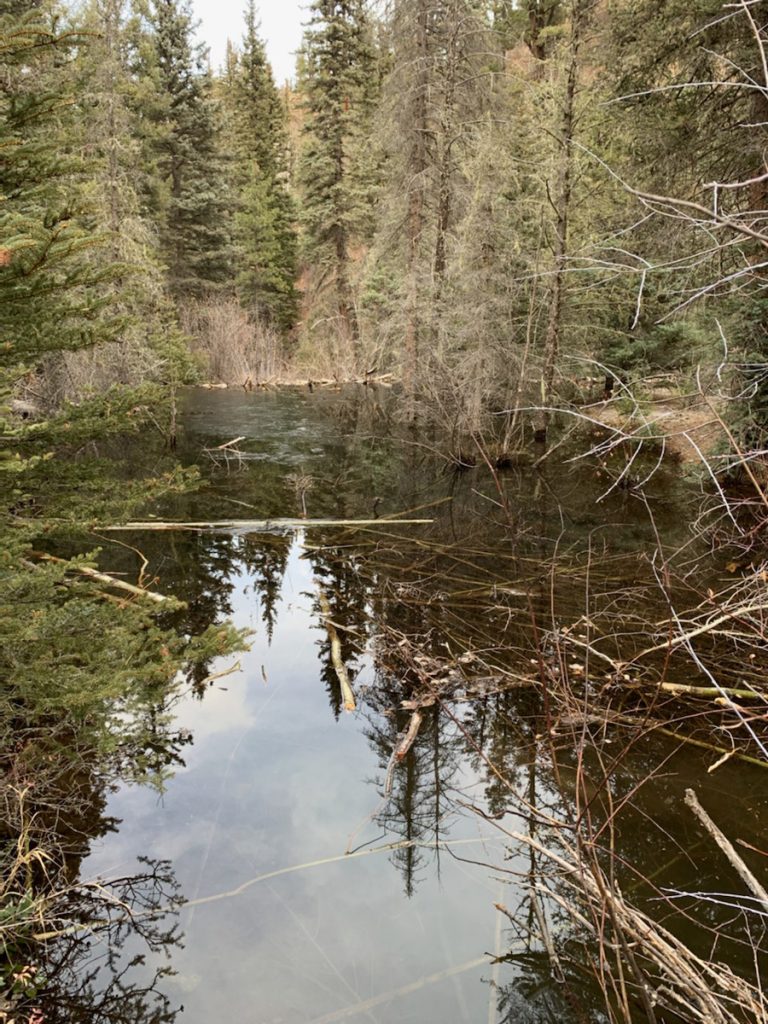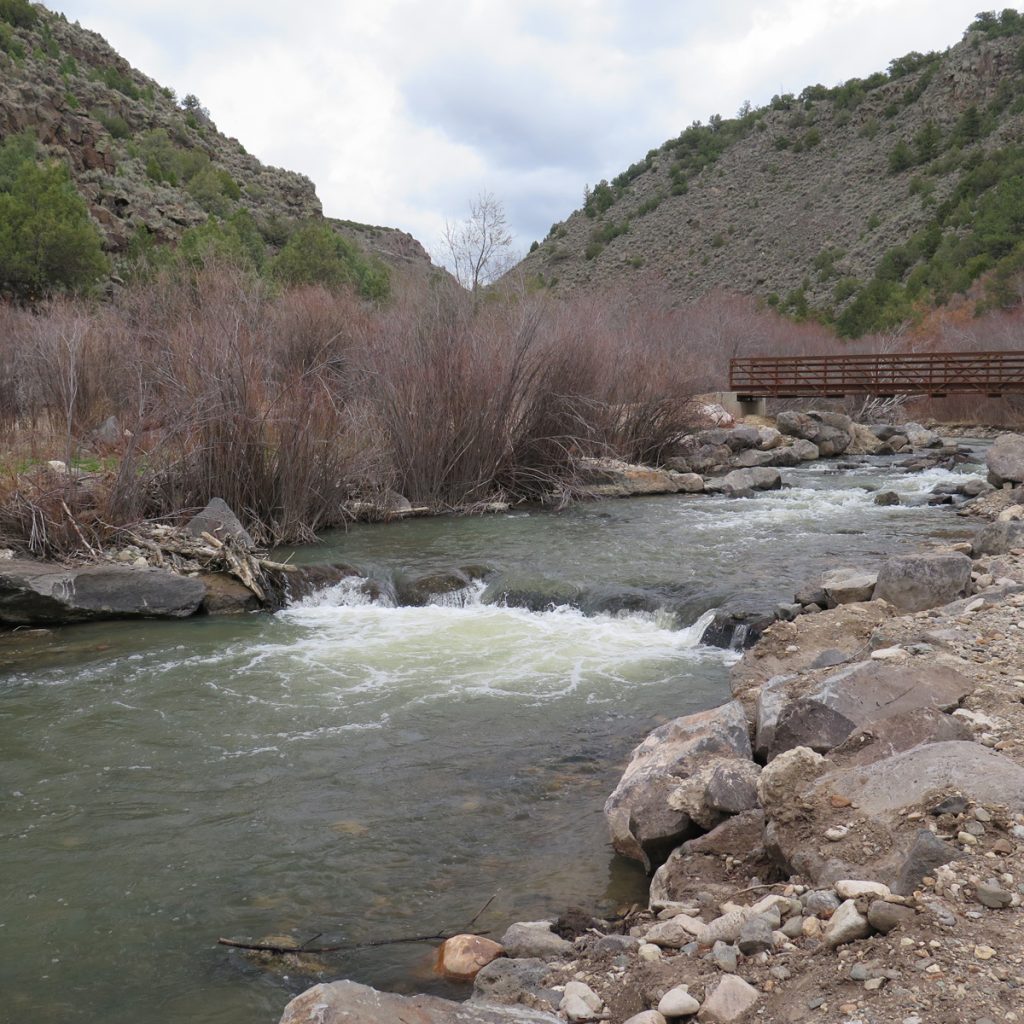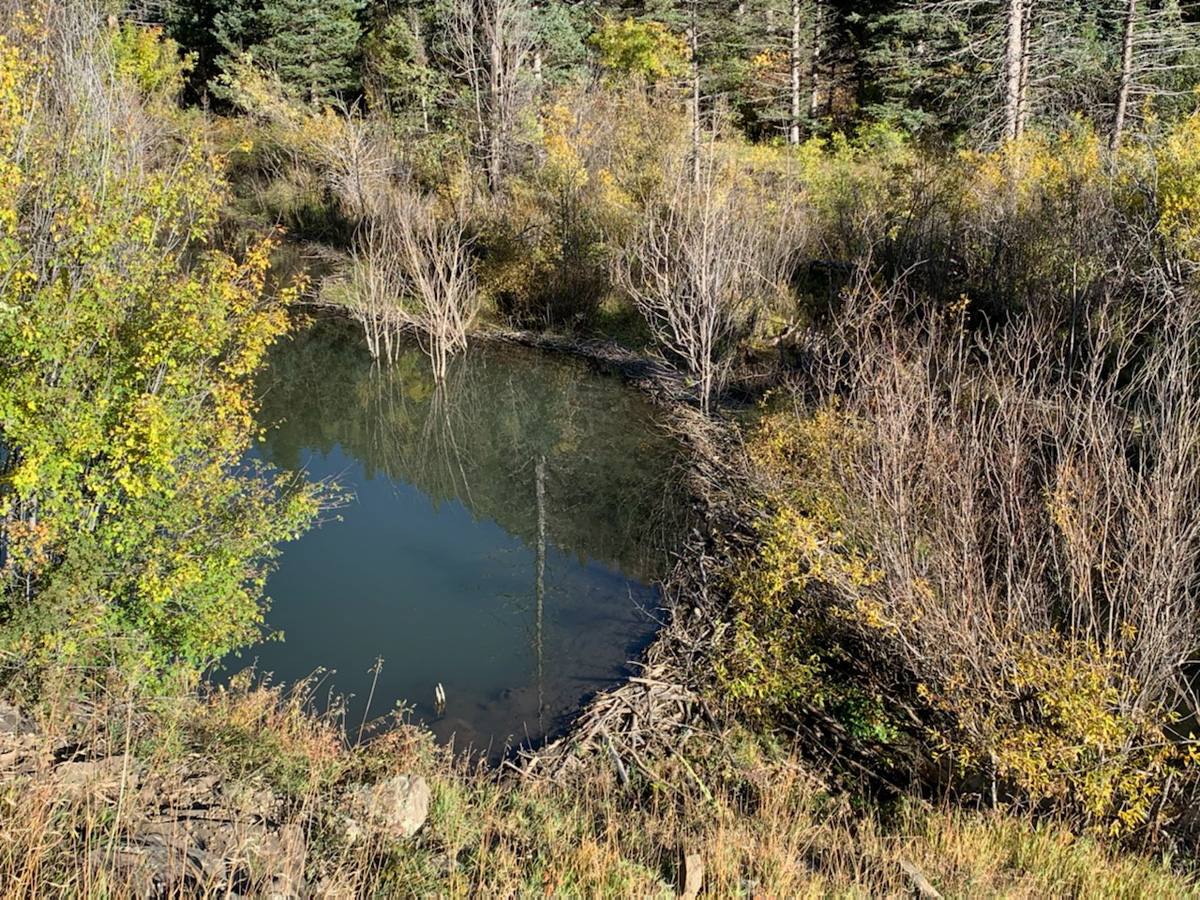When the tops of the peaks are brown in February, our thoughts turn to water. More than usual, anyway. It wouldn’t be a normal year in New Mexico without at least some water anxiety, but this year is getting a bit ridiculous. Lack of winter snowpack means one thing to a skier, another to a farmer or rancher. Quite another to a fly fisherman.
The adage goes, “In times of drought, prepare for flood. In times of flood, prepare for drought.” It’s amazing how often I (we) forget this, given that we’ve experienced the effects of both flood and drought quite recently with the disastrous flooding of the lower Rio Chama and the Hermits Peak fire after a winter as paltry as this one—recent storms aside—has been thus far. In my case, anyway, the imagination short circuits in the face of present conditions: when streams and snowpack are high, I forget they were ever low; when they’re low, I forget they were ever high.
In my perfect world, the winter mountains would be white from top to bottom from November through April. In the spring, the fields would green up, and the orchards would explode in blossoms. The nights would be cold, and the Rio Grande would remain low and clear enough for the anglers to enjoy a great caddis hatch between epic days on the slopes. The summer streams would run cool after a sustained runoff watered alfalfa fields and flooded riparian areas, enabling their natural function as water-storing sponges. We’d have more beavers, whose ponds would turbocharge water tables near our communities. And the monsoons would arrive on time and with a generous spirit, filling the streams with cold water and trout food.
We don’t live in an ideal world and never have. Which is not to say there aren’t pearls within our oysters. For example, if we’re in for a low-water year, Colorado’s take from the Rio will cause the gorge stretch to run low and clear. Contrary to intuition, the water will be cooler, as the influence of springs will be greater in the absence of hottish return flows from the San Luis Valley. Major tributaries like the Red and Rio Pueblo may be too warm to fish successfully, but their stressed trout populations will be spared from angling impact because few anglers will want to fish them. I suppose trout fishermen and farmers wouldn’t do what they do without the instinct to keep an eye out for silver linings.

Returning to the adage, this looks like a year to prepare for flood. Fortunately, a lot of this work has been happening in recent years in northern New Mexico. Big investments in stream restoration in the Valle Vidal and Midnight Meadows have increased the headwater storage capacity in the Costilla and Cabresto watersheds. The Cimarron restoration will not only improve trout fishing in the canyon but will convey water more efficiently to farms and ranches downstream. Throughout the region, communities continue trying to harness the water-storing potential of beavers while minimizing beaver impacts.
The bad news is that we might be in for one of those years, a fact exacerbated by uncertainties surrounding federal funding sources. The good news is that we’re still New Mexicans facing water challenges head-on.




